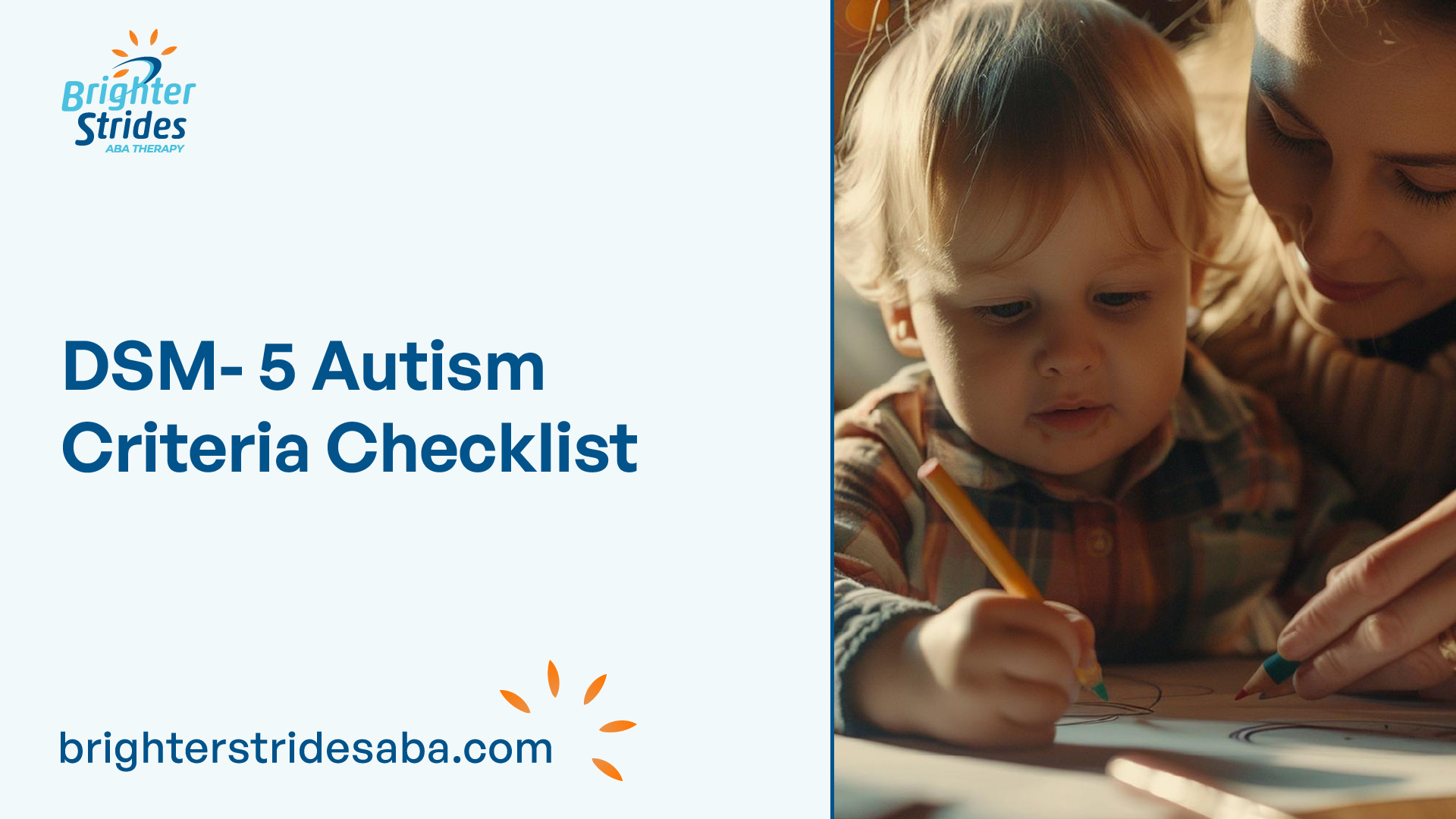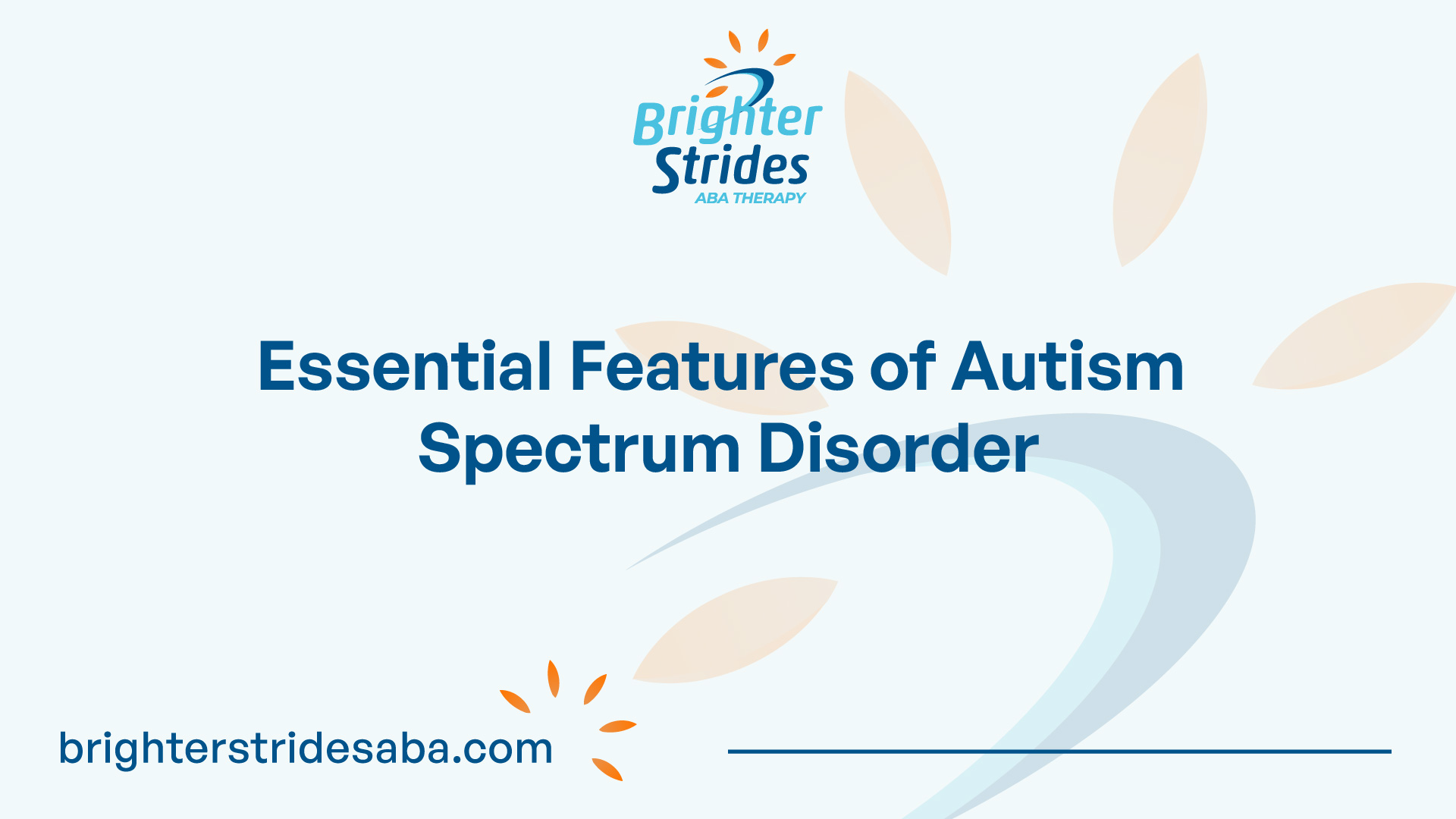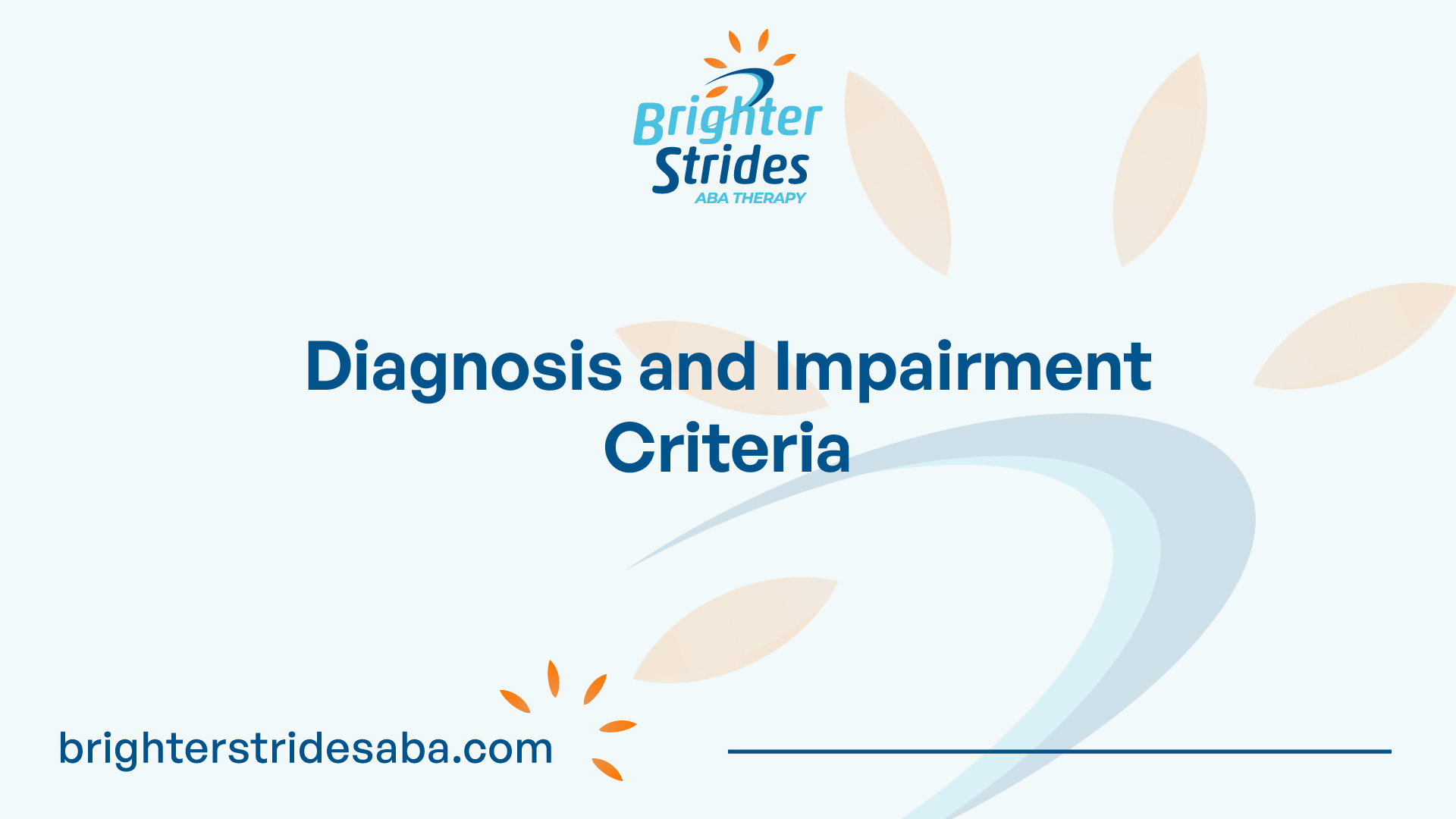Understanding Autism Spectrum Disorder
Autism Spectrum Disorder (ASD) is a neurodevelopmental disorder characterized by persistent deficits in social communication and social interaction, as well as restricted, repetitive patterns of behavior. The diagnostic criteria for ASD are outlined in the fifth edition of the Diagnostic and Statistical Manual of Mental Disorders (DSM-5) released by the American Psychiatric Association in 2013.
Read about: Understanding the Types of Autism Spectrum Disorders

DSM-5 Diagnostic Criteria
According to the DSM-5, to receive a diagnosis of Autism Spectrum Disorder, an individual must exhibit the following criteria:
- Persistent deficits in social communication and social interaction across multiple contexts. These deficits may manifest as difficulties in social-emotional reciprocity, nonverbal communication behaviors, and establishing and maintaining relationships.
- Restricted, repetitive patterns of behavior, interests, or activities. This may include repetitive motor movements, insistence on sameness, highly restricted interests, and hyper- or hyporeactivity to sensory input.
Additionally, the symptoms must be present in the early developmental period, typically recognized in early childhood, and cause clinically significant impairment in social, occupational, or other important areas of functioning. The disturbances cannot be better explained by intellectual disability or global developmental delay [1].
DSM-5-TR Revision
In 2022, the American Psychiatric Association released the DSM-5-TR, a text revision to the DSM-5. This revision included a clarification to the autism diagnostic criteria by changing the phrase “manifested by the following” to “as manifested by all of the following.” This change aimed to improve the intent and clarity of the wording in the diagnostic criteria [1].
The DSM-5 diagnostic criteria for Autism Spectrum Disorder provide a comprehensive framework for clinicians to assess and diagnose individuals with ASD. The criteria consider both current and past functioning, allowing for the diagnosis of individuals who may have shown early signs but whose symptoms became clear later in life [2]. The introduction of the DSM-5 consolidated various autism-related disorders under the umbrella term of Autism Spectrum Disorder, providing a more unified and inclusive approach to diagnosis [2].
Read about: Examining Autism Diagnostic Criteria (DSM-5)
Essential Features of Autism Spectrum Disorder
Autism Spectrum Disorder (ASD) is characterized by two essential features: social communication deficits and restricted, repetitive behaviors. The Diagnostic and Statistical Manual of Mental Disorders, Fifth Edition (DSM-5), provides specific criteria for diagnosing ASD, emphasizing these key aspects [1].

Social Communication Deficits
ASD individuals exhibit persistent deficits in social communication and social interaction across multiple contexts. The DSM-5 combines social and language deficits into a single measure, collapsing the three domains defined in the DSM-IV into two [3]. The diagnostic criteria for social communication deficits include:
- Deficits in social-emotional reciprocity: Difficulty with initiating or responding to social interactions, such as taking turns in conversation or sharing emotions.
- Deficits in nonverbal communicative behaviors: Challenges in using and understanding nonverbal cues, such as eye contact, facial expressions, and body language.
- Deficits in developing, maintaining, and understanding relationships: Struggles in forming and sustaining relationships, and difficulties in adjusting behavior to suit different social contexts.
Restricted, Repetitive Behaviors
Individuals with ASD also exhibit restricted, repetitive behaviors (RRBs), which are characterized by repetitive patterns of behavior, interests, or activities. The DSM-5 criteria for RRBs include at least two of the following four categories:
- Stereotyped or repetitive motor movements, use of objects, or speech: Examples include hand-flapping, lining up toys, or repeating phrases.
- Insistence on sameness, inflexible adherence to routines, or ritualized patterns: Resistance to change, a need for strict adherence to routines, or distress when routines are disrupted.
- Highly restricted, fixated interests that are abnormal in intensity or focus: Intense preoccupation with specific topics or objects, often at the expense of other activities.
- Hyper- or hyporeactivity to sensory input or unusual interest in sensory aspects of the environment: Heightened sensitivity or indifference to sensory stimuli, such as unusual reactions to sounds, textures, or light.
By encompassing these social communication deficits and restricted, repetitive behaviors, the DSM-5 criteria for ASD provide a comprehensive framework for diagnosing individuals on the autism spectrum. It is important to remember that meeting all the criteria is essential for an accurate diagnosis and appropriate interventions [4].
Diagnosis and Impairment Criteria
To accurately diagnose Autism Spectrum Disorder (ASD) according to the DSM-5 criteria, certain diagnostic and impairment criteria must be met. This section will focus on two key aspects: the early developmental period and clinical significance.

Early Developmental Period
Symptoms of ASD must be present in the early developmental period, which typically includes early childhood. This means that signs of ASD may be observed in a child’s behavior, communication, and social interaction during their early years. It’s important to recognize and monitor these early signs to facilitate early intervention and support for individuals with ASD [1].
Clinical Significance
In addition to symptoms being present in the early developmental period, the DSM-5 specifies that these symptoms must cause clinically significant impairment in social, occupational, or other important areas of current functioning. This means that the symptoms of ASD significantly impact an individual’s ability to engage in everyday activities and have a negative effect on their overall functioning.
The clinical significance criterion ensures that a diagnosis of ASD is made only when the symptoms significantly interfere with an individual’s daily life and functioning. It helps distinguish between typical variations in behavior and impairment associated with ASD.
By considering both the early developmental period and clinical significance, clinicians can make a comprehensive evaluation of an individual’s symptoms and their impact on their functioning. This approach allows for a more accurate diagnosis and provides the basis for appropriate intervention and support for individuals with ASD.
Understanding the diagnostic and impairment criteria outlined in the DSM-5 is essential in identifying and diagnosing ASD. It enables healthcare professionals to assess the presence of symptoms during the early developmental period and determine the clinical significance of these symptoms on an individual’s functioning. This comprehensive evaluation ensures that individuals with ASD receive the necessary support and interventions tailored to their specific needs.
Transition from DSM-IV
With the introduction of the DSM-5, significant changes were made to the diagnostic criteria for autism and related disorders. The DSM-5 merged all diagnoses under the pervasive developmental disorders category into a single disorder termed Autism Spectrum Disorder (ASD), eliminating childhood disintegrative disorder and Rett syndrome, and merging the social and communication symptom domains into a single social communication (and interaction) domain [4].
Diagnostic Changes
Individuals with a well-established DSM-IV diagnosis of autistic disorder, Asperger’s disorder, or pervasive developmental disorder not otherwise specified (PDD-NOS) should now be given the diagnosis of Autism Spectrum Disorder [1]. This change helps to streamline the diagnostic process and provide a more comprehensive understanding of the various manifestations of autism.
By merging the previous diagnoses into one label, the DSM-5 aimed to improve consistency and clarity in diagnosing ASD. This change reflects the recognition that these disorders exist on a spectrum, with varying degrees of severity and symptoms.
Impact on Diagnosis
The transition from DSM-IV to DSM-5 has had implications for the diagnosis of autism. Children who previously met DSM-IV criteria for autistic disorder but do not meet the criteria for ASD under DSM-5 are more likely to have mild ASD symptoms or symptoms accounted for by another disorder.
One significant change introduced by the DSM-5 is the inclusion of severity ratings for ASD. This offers a way to identify different levels of severity for each individual, providing a clearer understanding of the support and intervention required. The severity levels in DSM-5 include:
- Level 1: Requiring Support
- Level 2: Requiring Substantial Support
- Level 3: Requiring Very Substantial Support.
These severity levels help professionals and caregivers to better assess and address the specific needs of individuals with ASD, facilitating targeted interventions and support.
Overall, the transition from DSM-IV to DSM-5 has provided a more comprehensive framework for diagnosing and understanding Autism Spectrum Disorder. By consolidating the diagnoses and introducing severity ratings, the DSM-5 offers a more nuanced approach to the diagnosis and classification of autism.
Social (Pragmatic) Communication Disorder
In addition to Autism Spectrum Disorder (ASD), the DSM-5 also recognizes another communication disorder known as Social (Pragmatic) Communication Disorder (SPCD). This section explores the diagnostic criteria overview for SPCD and the functional limitations associated with this disorder.
Diagnostic Criteria Overview
According to the DSM-5, the diagnostic criteria for Social (Pragmatic) Communication Disorder include persistent difficulties in the social use of verbal and nonverbal communication, resulting in functional limitations in various areas such as effective communication, social participation, and academic achievement. These difficulties are not better explained by intellectual disabilities or global developmental delay.
To meet the criteria for SPCD, the following characteristics may be observed:
- Challenges in using communication for social purposes, such as greeting, informing, or requesting.
- Difficulties in following rules for conversation and storytelling, such as taking turns and staying on topic.
- Impairments in understanding and using nonverbal communication cues, such as body language and facial expressions.
- Troubles adapting communication styles to fit different social contexts.
- Limited or inappropriate initiation of social interactions.
- Difficulties understanding implied meanings in communication.
The symptoms of SPCD must be present in early childhood, typically by the time the child is in the early developmental period. It’s important to note that the symptoms of SPCD are not better explained by other conditions, such as ASD or intellectual disabilities [1].
Functional Limitations
Social (Pragmatic) Communication Disorder can significantly impact various areas of an individual’s life. The functional limitations associated with SPCD may include difficulties in communication, social relationships, academic achievement, and occupational performance. These challenges can vary in severity, depending on the individual.
Individuals with SPCD may have trouble effectively expressing themselves and understanding the intentions of others during social interactions. This can lead to misunderstandings, miscommunications, and difficulties forming and maintaining relationships. Academic achievement may also be affected due to challenges in understanding and utilizing appropriate communication skills in educational settings.
It’s important for individuals with SPCD to receive appropriate support and interventions to address these functional limitations. Speech and language therapy, social skills training, and other evidence-based interventions can help individuals with SPCD develop and improve their communication skills, enhance social interactions, and achieve their full potential in various areas of life.
Understanding the diagnostic criteria and functional limitations of Social (Pragmatic) Communication Disorder is essential for accurate identification and appropriate support for individuals who may experience difficulties in the social use of verbal and nonverbal communication.
Severity Levels in Autism Spectrum Disorder
The DSM-5 introduced a severity rating for Autism Spectrum Disorder (ASD), providing a framework to identify different levels of severity for each individual. These severity levels help professionals understand the level of support and intervention necessary for individuals with ASD. The severity levels defined by the DSM-5 are as follows:
Level 1: Requiring Support
Level 1 indicates that an individual with ASD requires support. They may experience challenges in social communication and interactions, as well as restricted, repetitive behaviors. However, their symptoms do not significantly impair their ability to function independently.

Level 2: Requiring Substantial Support
Level 2 represents individuals with ASD who require substantial support. They exhibit more pronounced difficulties in social communication and interactions, as well as increased restricted and repetitive behaviors. Their impairments significantly impact their daily functioning and may necessitate additional assistance and accommodations.

Level 3: Requiring Very Substantial Support
Level 3 denotes individuals with ASD who require very substantial support. They experience severe challenges in social communication and interactions, as well as intense restricted and repetitive behaviors. Their impairments significantly affect their ability to function independently and necessitate extensive support and accommodations.

These severity levels provide a system for professionals to assess and describe the level of support required by individuals with ASD. It’s important to note that the severity level does not indicate the overall intelligence or abilities of individuals with ASD, but rather the level of support they need to navigate their daily lives.
Clinicians and professionals use these severity levels to guide interventions, therapies, and support services tailored to the specific needs of individuals with ASD. By understanding the severity levels, it becomes easier to develop personalized strategies to enhance their social communication skills, manage restricted behaviors, and improve their overall quality of life.
References
- https://www.autismspeaks.org/autism-diagnostic-criteria-dsm-5
- https://www.research.chop.edu/car-autism-roadmap/diagnostic-criteria-for-autism-spectrum-disorder-in-the-dsm-5
- https://www.thetransmitter.org/spectrum/dsm-5-redefines-autism/
- https://www.ncbi.nlm.nih.gov/pmc/articles/PMC7317665/
- https://www.ncbi.nlm.nih.gov/pmc/articles/PMC6713264/

 We've just released an article!
Check out our blog!
We've just released an article!
Check out our blog!



